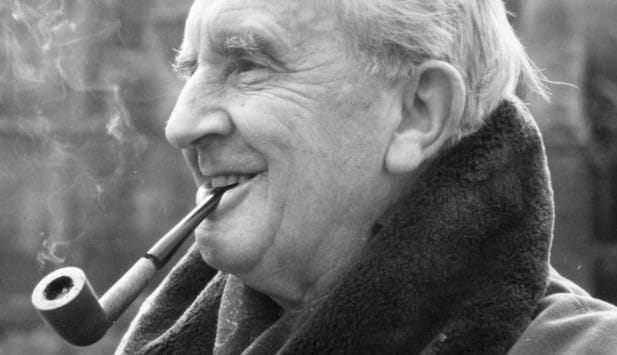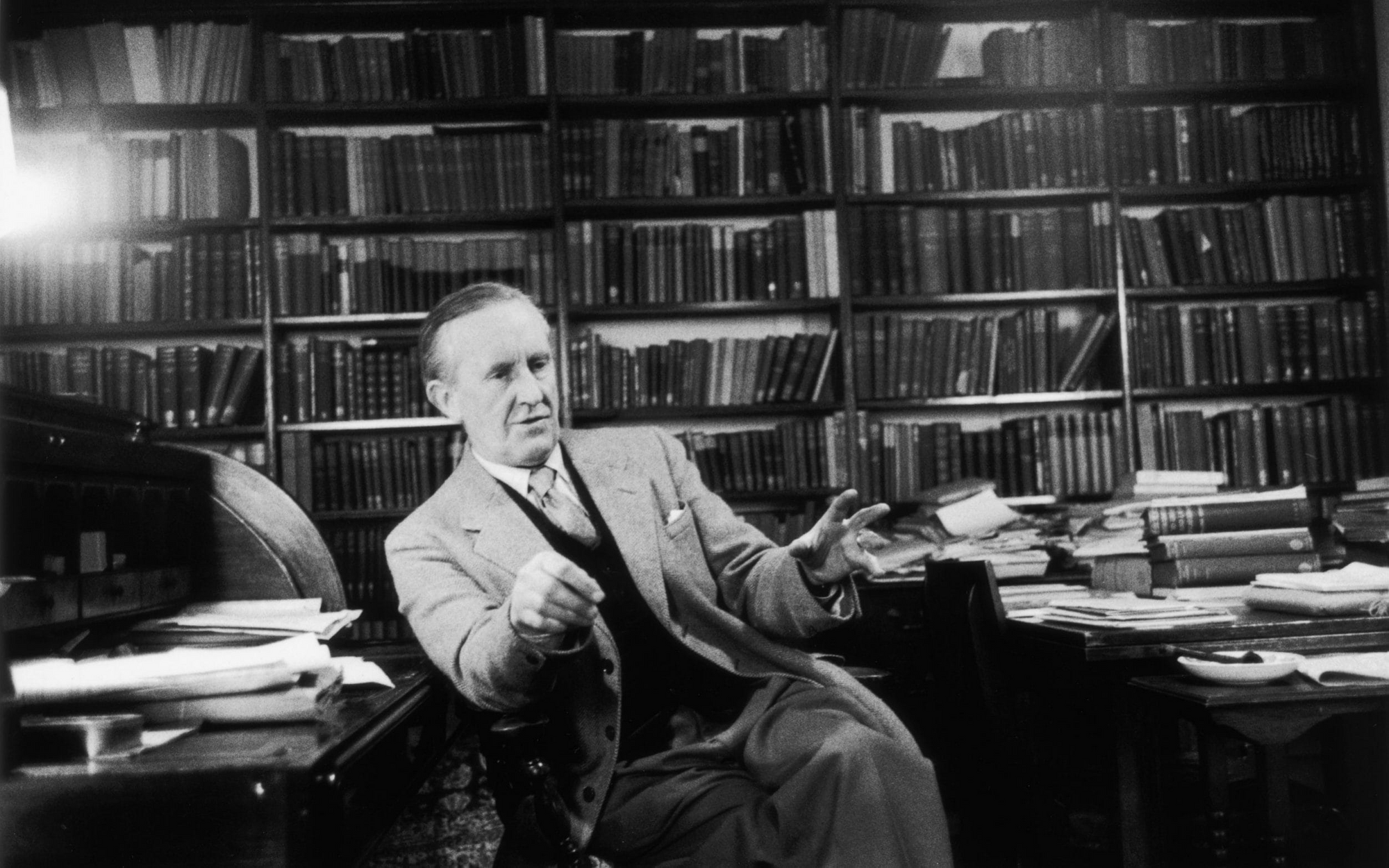Algorithms, Elves and Recycling. Not every idea has to be original.
Learning any artistic skill feels like a loss of innocence. This is an exploration of what studying Tolkien taught me about creating art having done it professionally for a few years.

Lets start with a quick key for some topics I cover later:
- Anglo-Saxon → German people who, from the 5th century ce to the time of the Norman Conquest (1066), inhabited and ruled territories that are today part of England and Wales.
- Norse → Ancient Scandinavian language of the Vikings
- Old English → Predecessor to modern English from Anglo-Saxon times.
- Beowulf →Beowulf is an Old English epic poem consisting of 3,182 alliterative lines and important work in the history of English literature.
Art & Code
Learning any artistic skill feels like a loss of innocence. When you look at a piece of art and you have no knowledge in the area the images look like magic beauty that flowed out of peoples minds and onto the paper. I was the same when I started creative coding professionally at Variable. However, as you start to learn, you realise that a lot of the magic that underpinned some of the work you admire isn't so magic after all. An example of this is an algorithm called 'curl noise'. Curl noise was built to simulate how fluids can't be compressed, and because of that property if you use it as a field to move things through you end up with hypnotic 'fluid-like' movement.
It's used widely in creative coding and new media and creates beautiful results.
There are other algorithm examples, I also learned about Delaunay/Voronoi triangulation, wave function collapse, space colonisation, L systems and quite a few others. I am still learning more as time goes on. This isn't unique to just creative coding either. You can apply the same attitude to musical theory, color theory, composition and plot arcs. Just formula for you to follow and spit out high quality images/music/video/books.
These 'peeks behind the curtain' were quite sad for me to learn because in some ways it was 'too simple'. If everyone is just using the same algorithms over and over then where is the craftsmanship and artistry. Well let's get back to that.
JRR Tolkien
One of the most respected authors of all time is the creator of 'Lord of the Rings', 'The Hobbit' (and others) J.R.R. Tolkien. I'm sure you've at least heard of him. I love the fantasy genre and all of the modern elements you see repeated in most fantasy media are thanks to this man. It's hard to understate the overwhelming effect that he had on modern fantasy literature. When we think of elves and dwarves we see the tropes that were put into the zeitgeist by him, and I used to (and still do) admire his ingenuity at bringing these other races to life in a coherent world. I used to wonder how he thought this stuff up; elves and dwarves and ents and goblins and orcs - now so iconic to the fantasy genre - brought to life by this man.
It's not quite that simple though. I recently read a fantastic book I recommend to any Tolkien fan called 'The road to Middle Earth: How J.R.R. Tolkien created a new mythology' by Tom Shippey. The quotes a little later are from this book. It's about Tolkien's life and what inspired him to create Middle Earth, the Lord of the Rings universe. Tolkien was a lecturer on Old English, Middle English and the history of the English language; he worked for the Oxford dictionary for a while on the etymology of words and privately translated Beowulf himself. He took language very seriously. This set of skills gave him an ability to really understand and digest old fairy tales both Anglo-Saxon and Norse, and draw insight from them. He had a deep understanding the actual words being used as well as the stories being told.
The storytelling devices (characters, races, themes) that he wrote about in Middle Earth existed previously. These elements were known about by English academics as most of the are from Norse, Anglo-Saxon and Germanic folklore. Tolkien, however, thought differently about what they meant and arranged them in a beautiful and compelling way.

Concerning Elves
Let's take the example of Elves.
“there can be little doubt what Tolkien thought of the ‘elves’ of English and Germanic tradition. He knew to begin with that Old English ælf was the ancestor of the modern word, was cognate with Old Norse álfr, Old High German alp, and for that matter, had it survived, Gothic *albs.”
Tolkien tried to figure out the character of this race of people using what he could translate. Despite the Beowulf poet describing them as decedents of Cain 'the primal murderer' it wasn't clear if Elves were good or evil, as other sources implied they weren't as bad as that. They had known to be more forgiving in other stories; Old Icelandic Christians believed you shouldn't offer then sacrifice and The Anglo-Saxons told stories about appeasing them or 'you might get wæterælfádl - water-elf disease’, or 'ælfsogoða - lunacy'. It was from compiling these old recounts that Tolkien derived a mysterious and possibly dangerous people; intelligent and not to be treated like savages, but also intrinsically powerful and mysterious. He also noted their allure, Shippey writes:
“Ælfscýne is an approbatory Anglo-Saxon adjective for a woman, ‘elf-beautiful’. Fríð sem álfkona, said the Icelanders, ‘fair as an elf-woman’. The standing and much-repeated story about the elves stresses their mesmeric charm.”
From this Tolkien also believed them to be very beautiful and reflected this part of their mythology in his stories. I will not continue as Tom Shippey has written a truly exceptional book and this paragraph is bordering on plagiarism, but the point I want to make here is that Tolkien reframed existing stories in a new way to build something coherent and unique. He did something that wasn't and hadn't been done - taking the mythology seriously. This allowed to him use these narrative tools that were already existing and frame them in a novel way to generate a masterpiece.
So What?
There was a short time in my career where my admiration of work in my field was diminished if I could see the nuts and bolts that made up the piece. If I could recognise the underpinning algorithms then it was easy for me to have an arrogant 'well I could do that' response to the work and dismiss it. Thankfully I moved past that quickly, but I did feel a sadness when I decided to make something new and lean on a widely used algorithm. There was an element that I can't create something truly great if I don't make a groundbreaking discovery first, and my ideation of that was inventing a brand new usable creative coding algorithm.
The key thing I realised when I was reading about Tolkien was the tools you use to create something don't have to be original and they don't even have to be new, if you can use them in a groundbreaking way. Tolkien took existing stories, thought about them deeply like no-one else had done, and used them to build a captivating world and timeless story.
The possibility space for creative work is endless, we see this every day when new things keep being produced by the creatives we admire. My focus going forward is to think about ways that I can reframe what I already know, twist existing patterns and use these tools in innovative new ways without stressing about the novelty that underpins it.
Let us take what we know and build something great with that foundation, instead of a constant focus on making sure every part of something being brand new.
Im going to sign off with a quote from Tolkien that was put in the forward of the second edition of Lord of the Rings.
"Some who have read the book, or at any rate have reviewed it, have found it boring, absurd, or contemptible; and I have no cause to complain, since I have similar opinions of their works, or of the kinds of writing that they evidently prefer."
